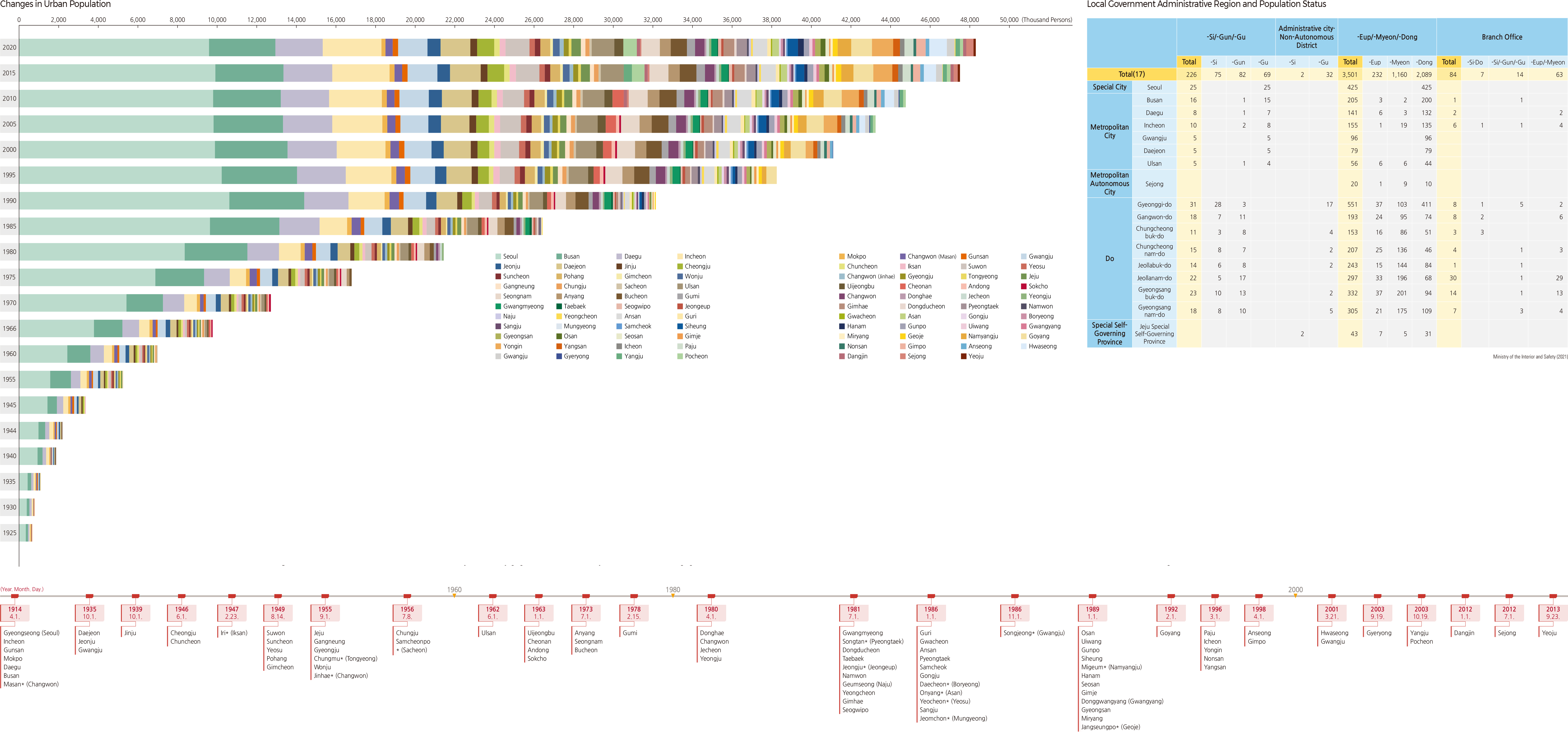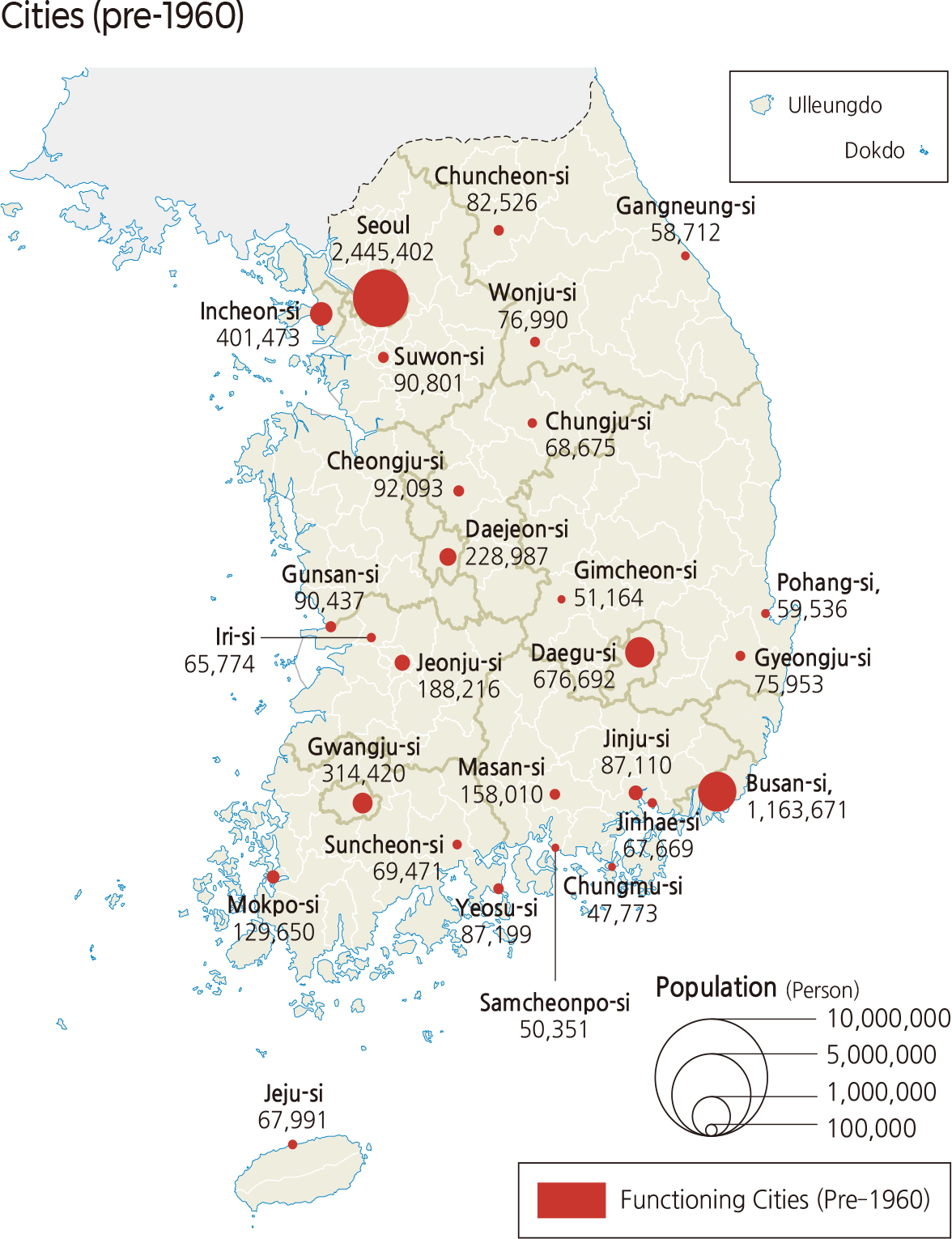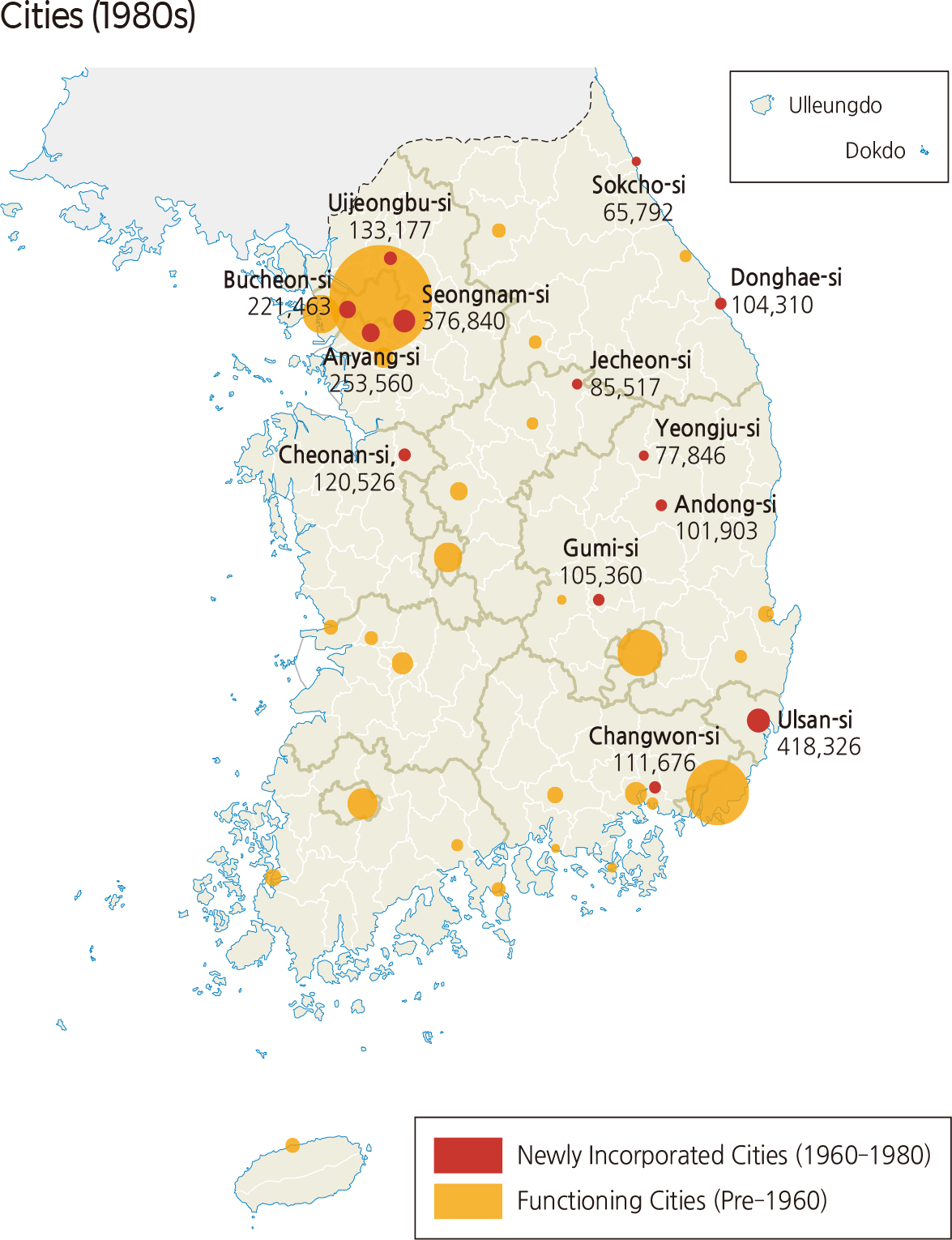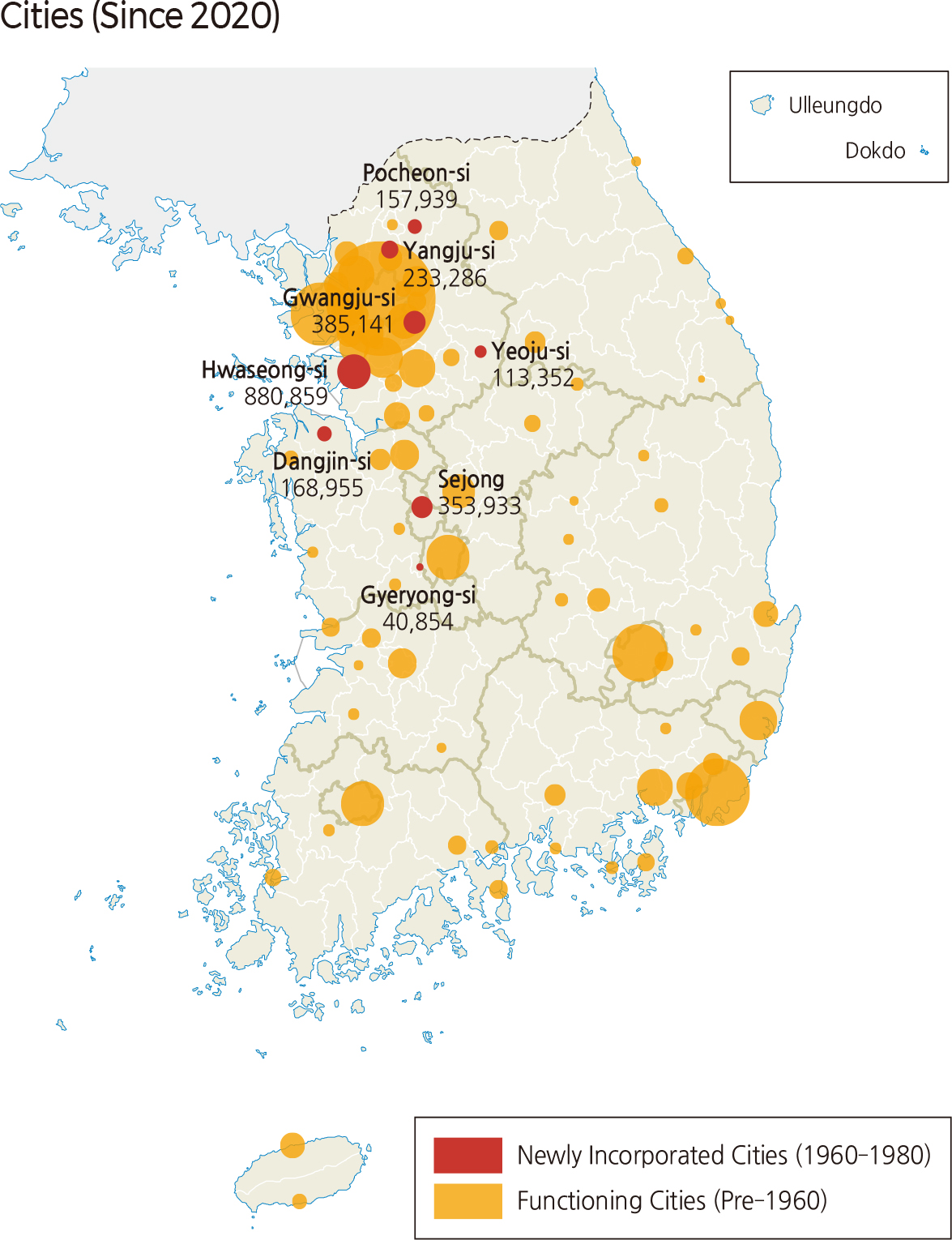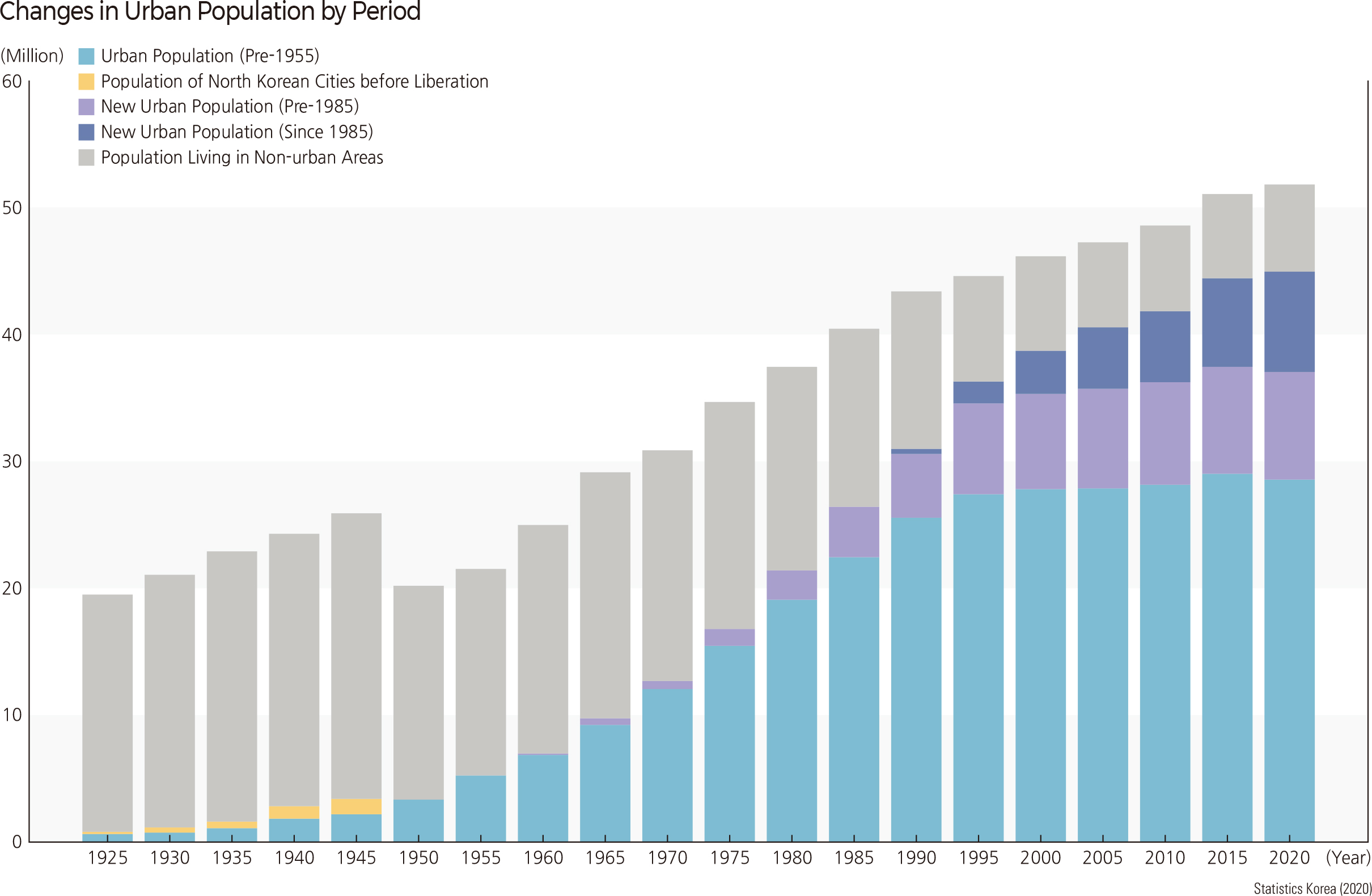English III 2021
Immediately after liberation from Japan in 1945, there were 11 cities in Korea: seven cities (Seoul, Incheon, Gunsan, Mokpo, Daegu, Busan, and Masan) designated in 1914, three cities (Daejeon, Jeonju, and Gwangju) in 1935, and one city (Jinju) in 1939. In 1948, as the US army military government in Korea appointed Cheongju (1946), Chuncheon (1946), and Iri (1947) as cities, the Korean government started with 14 cities. The number of cities has increased rapidly due to industrialization and urbanization. As of the end of December 2020, Korea had one special city (Seoul), one self-governing city (Sejong), six metropolitan cities (Busan, Daegu, Incheon, Gwangju, Daejeon, and Ulsan), two -si districts in Jeju Self-Governing Province, and 75 -si districts in -do districts. Yeoju-si was the most recently designated as -si district on September 23, 2013. Gyeonggi-do has the largest number of -si districts with 28, followed by Gyeongsangbuk-do (10), Chungcheongnam-do (8), Gyeongsangnam-do (8), and Gangwon-do (7). Gyeonggi-do is a metropolitan area with 28 -si and 3 -gun districts. Chungcheongnam-do also has more -si districts (8) than -gun districts (7). The 15 cities designated before the Korean War in 1950 have grown into major cities today. Seoul was already a large city with a population of 990,000 in 1944. In 1949, after liberation from Japan, the population of Seoul was 1.45 million. In 1955, after the Korean War ended, Seoul was the largest city with a population of 1.57 million, accounting for 34% of 4.65 million, the total city population of the country. Busan, which had a population of 330,000 (1944) before liberation from Japan, grew to 470,000 in 1949 and then expanded to 1.05 million, 23% of the total city population of the country, in 1955. Daegu (490,000), Incheon (320,000), Gwangju (230,000), and Daejeon (170,000) were the cities with more than 150,000 people in 1955. These cities have become metropolitan cities today. The cities with a population of over 100,000 were Masan (130,000), Jeonju (120,000), and Mokpo (110,000). The city with the smallest population was Iri (Iksan today), with 62,006 people. In 1955, 21.2% of the national population lived in 14 cities. In 1995, 56.1% of the national population lived in these cities due to the expansion of Seoul’s population and the growth of other metropolitan areas. Even today, 49.7% of the national population lives in the regions that became cities before 1950. In 1995, the first Local Election, which elected local government heads, led to significant changes in the administrative district system. Many cities elevated from -eup to -si districts expanded their areas into urban-rural complex cities by integrating with the surrounding -gun districts. On January 1, 1995, 35 urban-rural complex cities were designated. On March 1 of that year, rural districts merged into neighboring metropolitan cities, Gijang-gun into Busan, Dalseoung-gun into Daegu, and Ganghwa-gun and Ongjin-gun into Incheon. Ulsan, which was an urban-rural complex city, became Ulsan Metropolitan City. On May 10 of that year, five cities became urban-rural complex cities, and the whole country had an urban structure centered on urban-rural complex cities. At that time, urban-rural complex cities were 4 out of 7 -si districts in Gangwon-do, 2 out of 3 -si districts in Chungcheongbuk-do, all 5 -si districts in Chungcheongnam-do, 5 out of 6 -si districts in Jeollabuk-do, 3 out of 6 -si districts in Jeollanam-do, all 10 -si districts in Gyeongsangbuk-do, and 9 out of 10 -si districts in Gyeongsangnam-do. In Gyeonggi-do, which is a part of the Seoul Metropolitan Area, 3 -si districts were integrated. Migeum-si merged with Namyangju-gun to become Namyangju-si, and Songtan-si and Pyeongtaek-si merged with Pyeongtaek-gun to become Pyeongtaek-si. After that, however, Yongin, Paju, Icheon (1996), Anseong, Gwangju (2001), Yangju, Pocheon (2003), and Yeoju (2013) were converted from -gun districts to urban-rural complex cities. |
